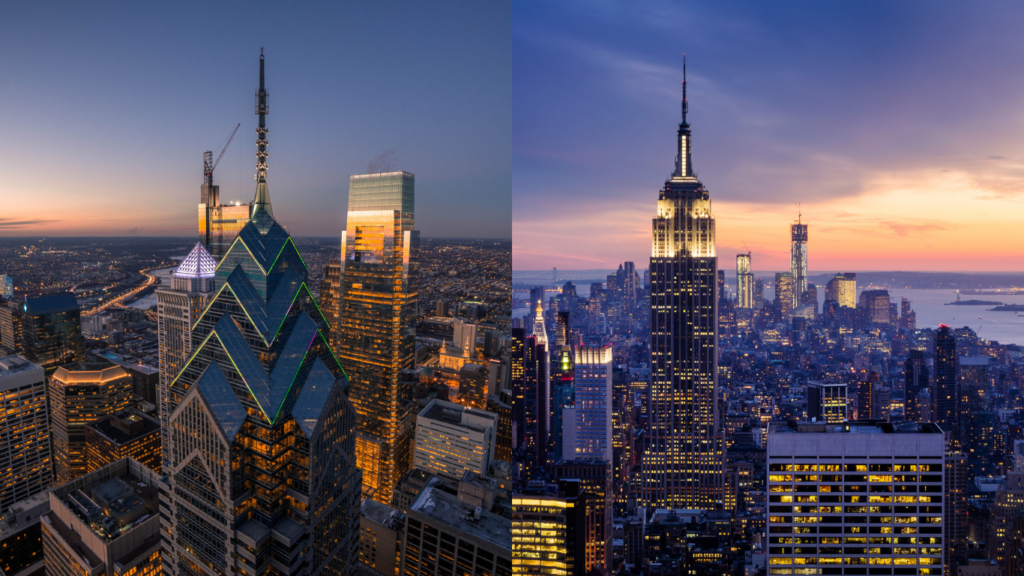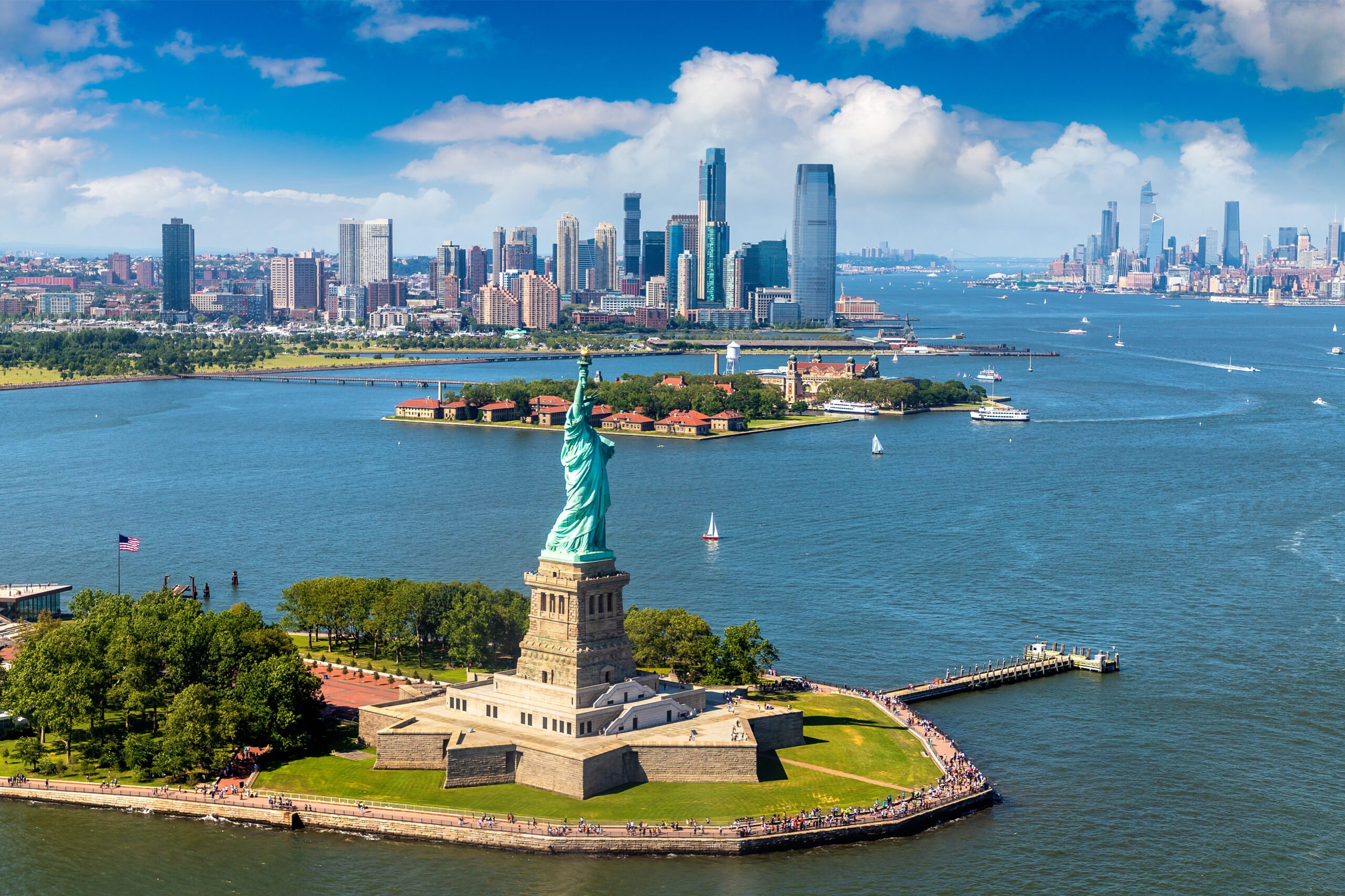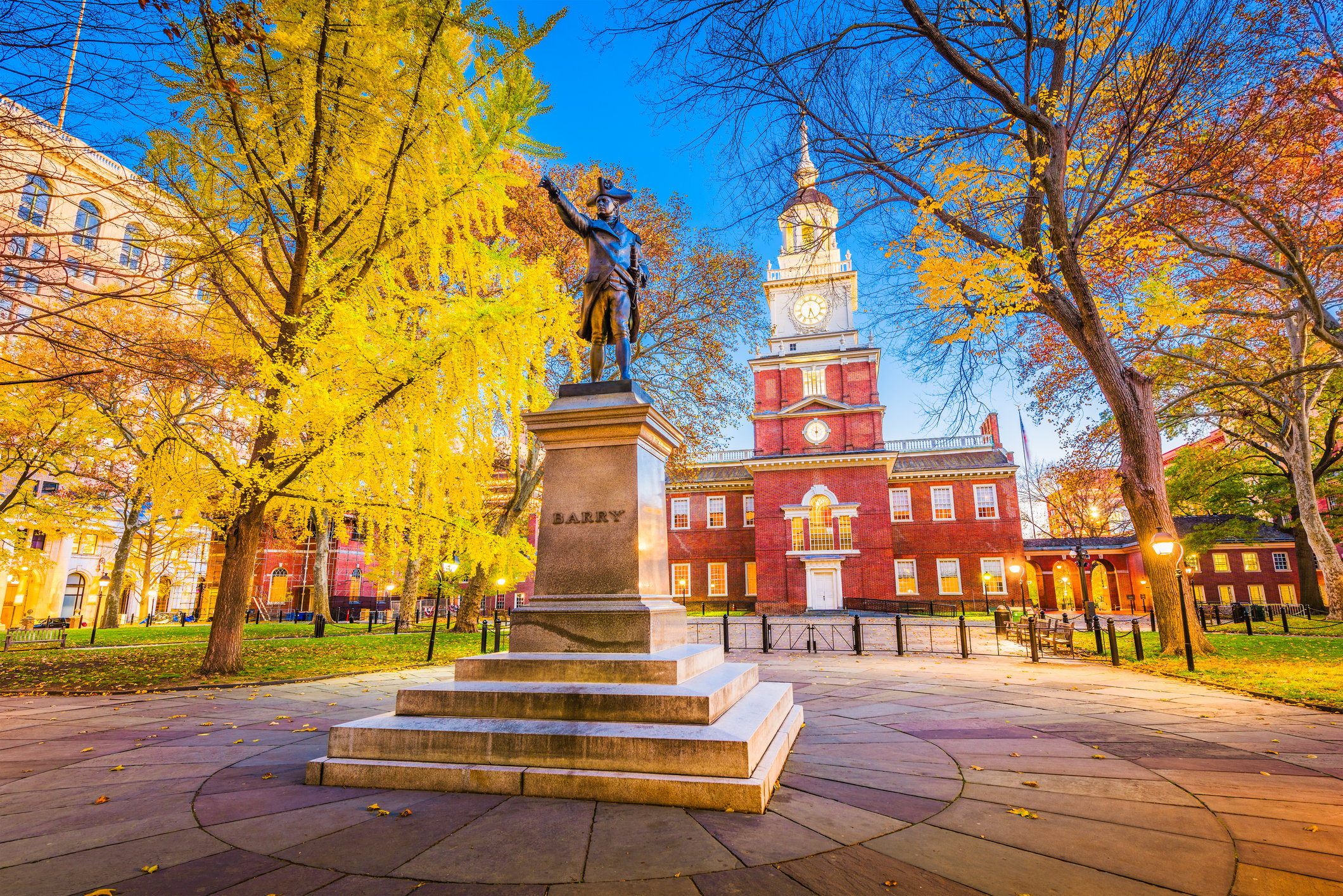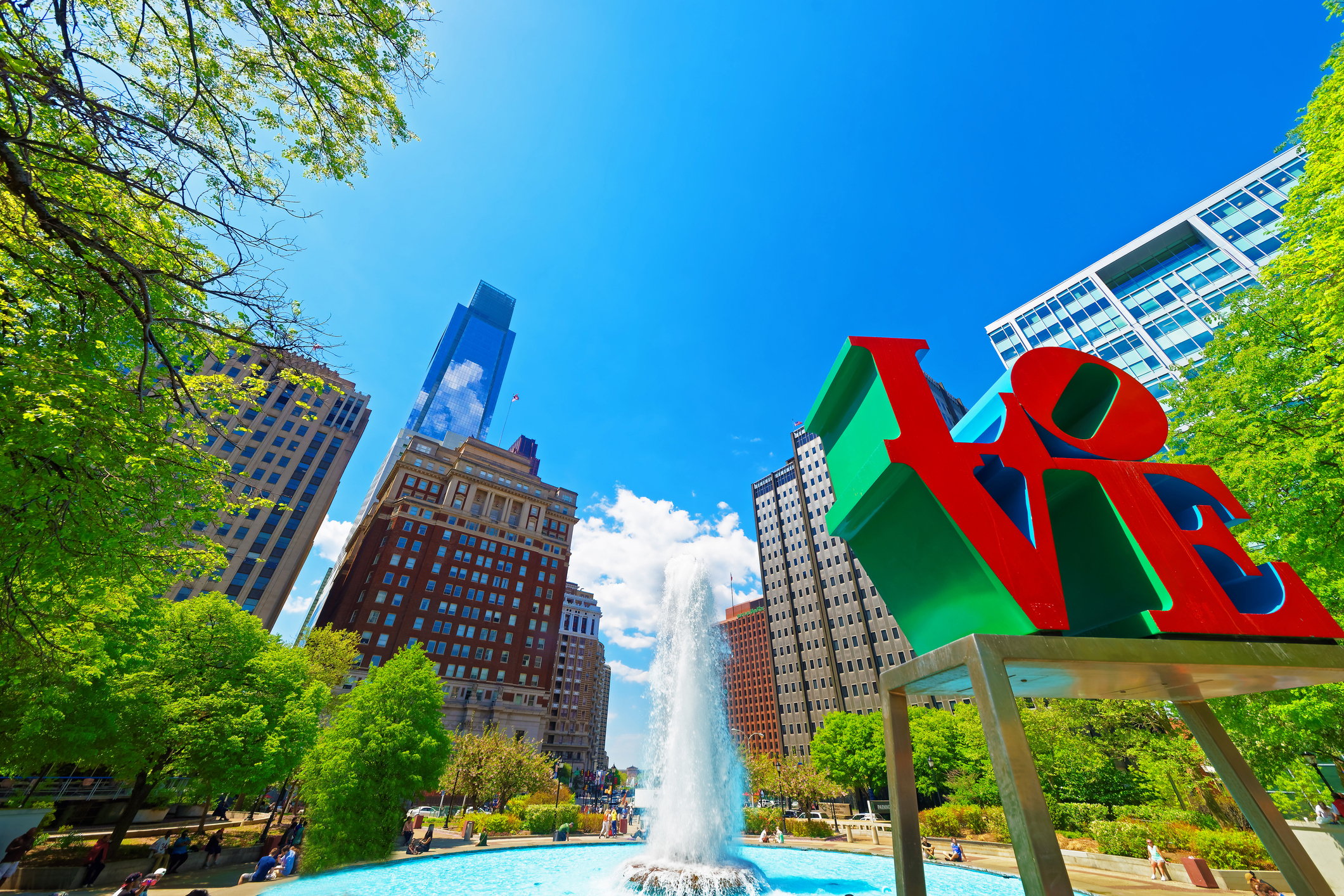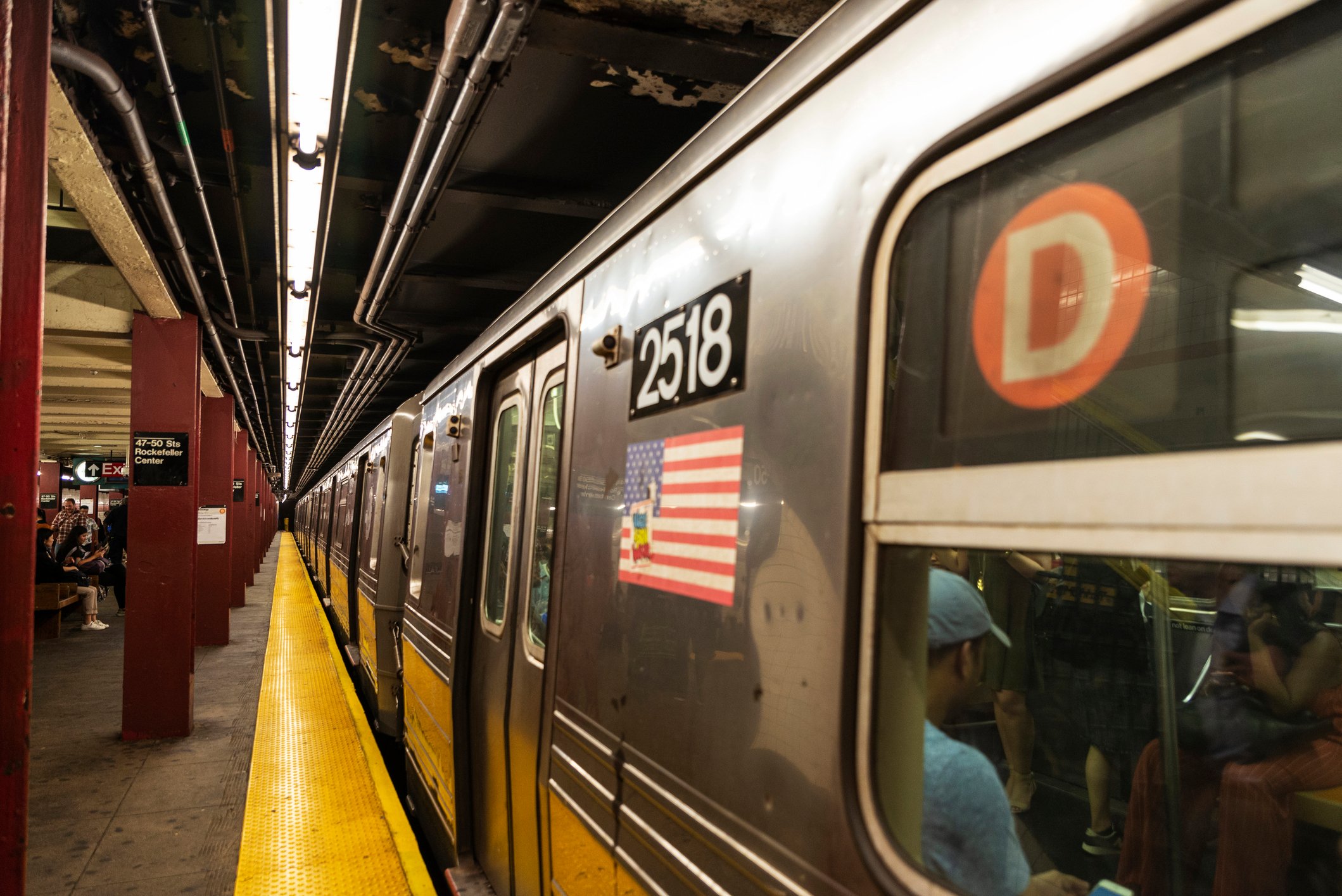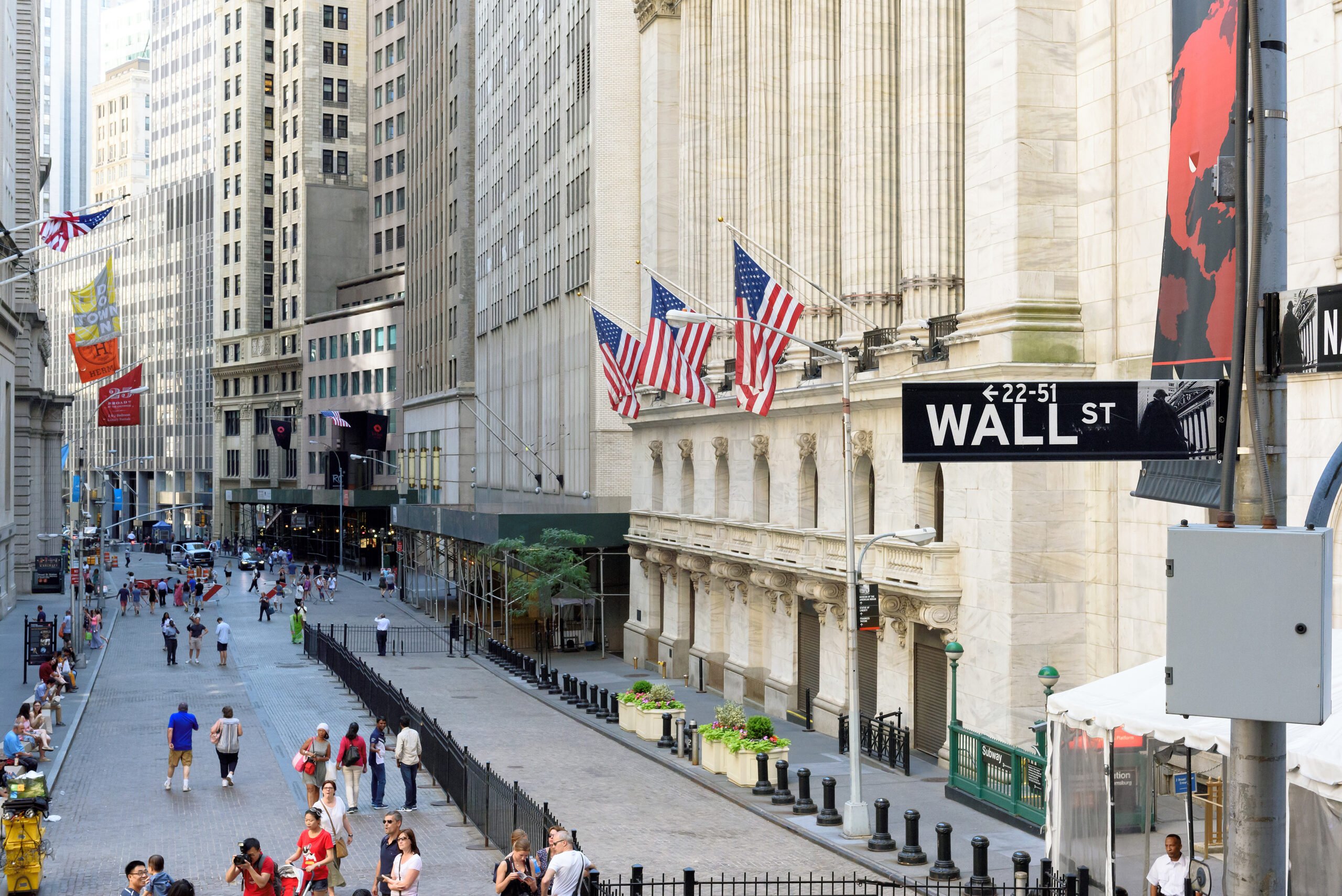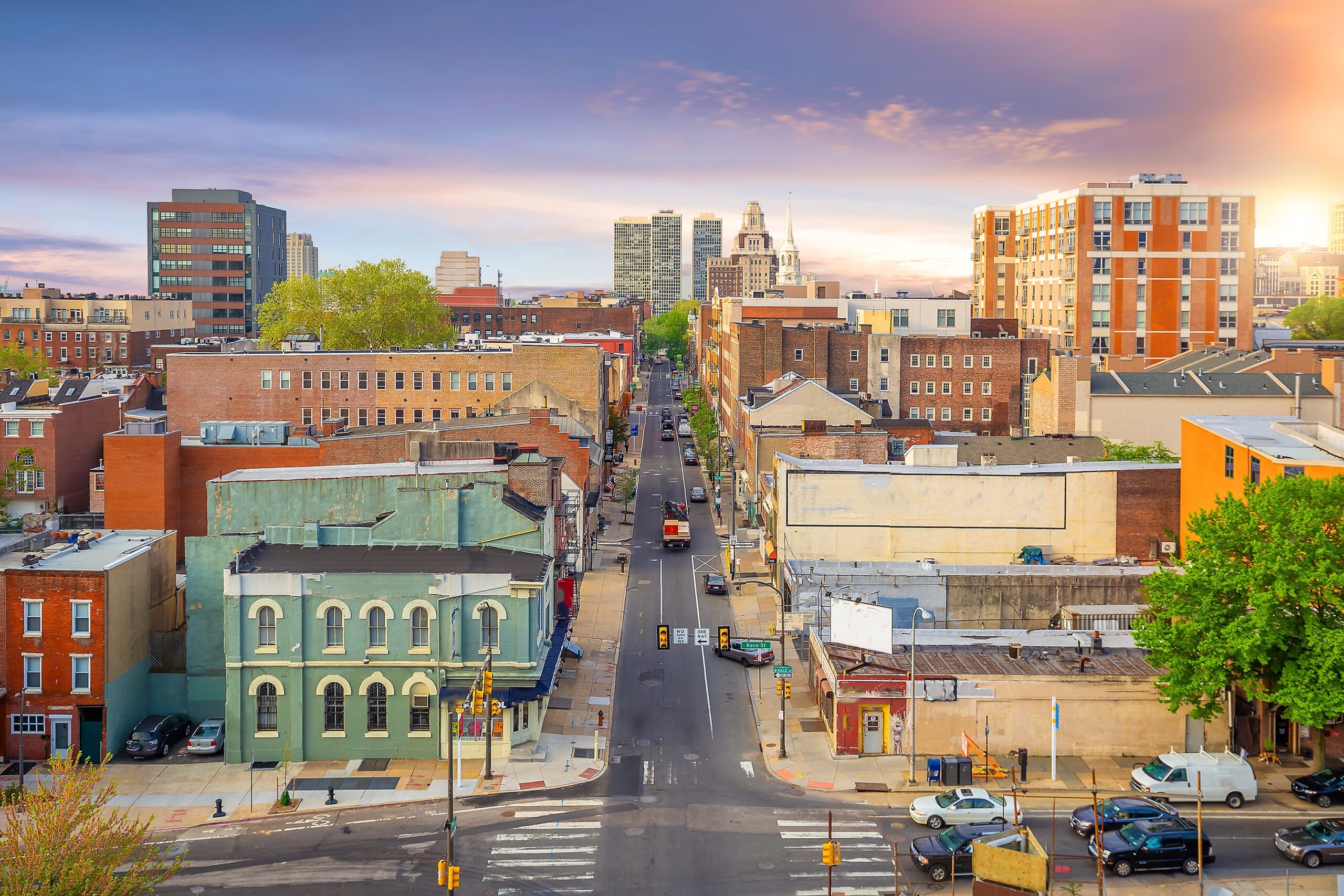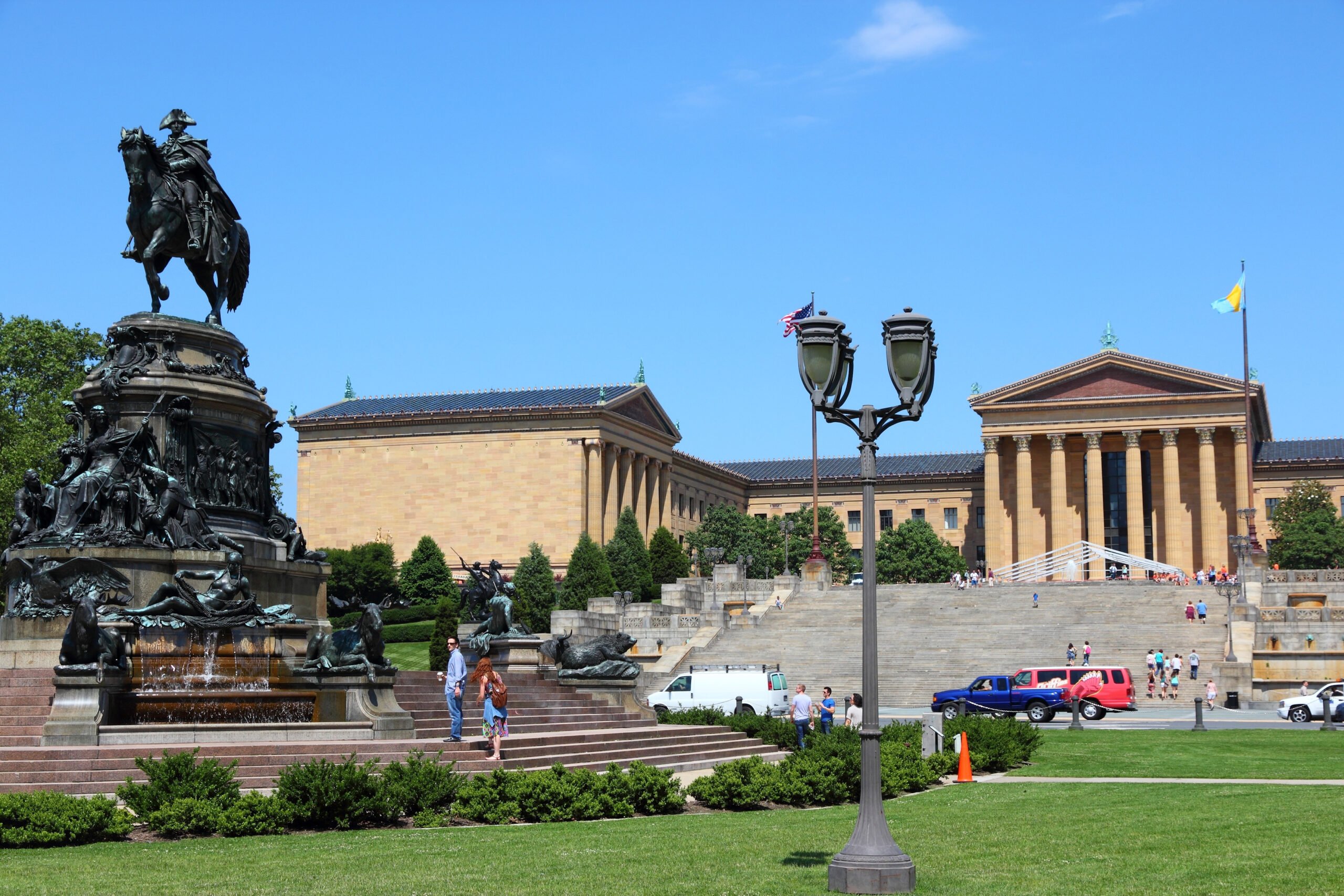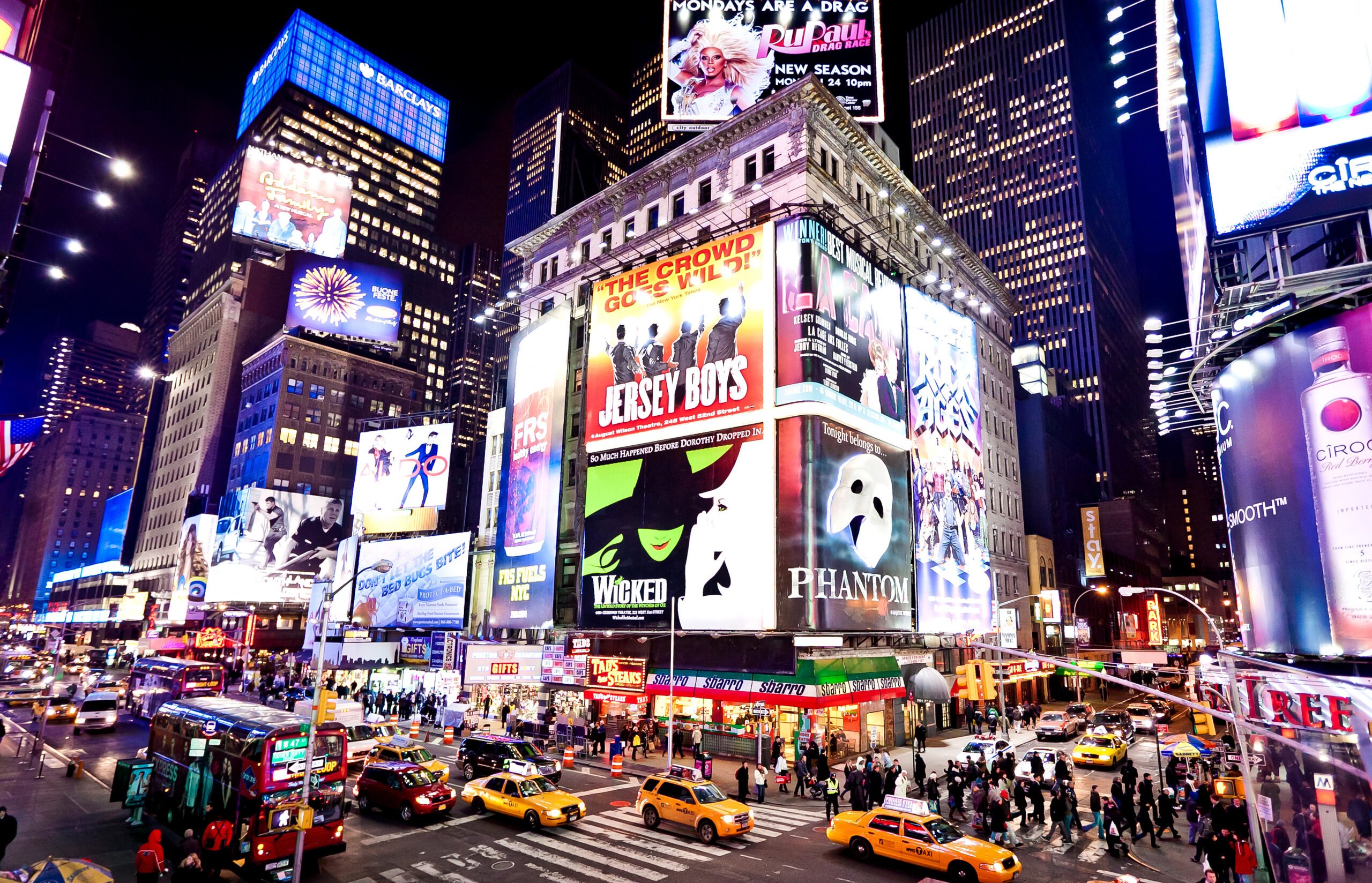Philadelphia and New York City are iconic East Coast cities with unique charms and challenges. The ongoing debate of Philly vs. New York underscores the distinct cultural and lifestyle differences between the two. Whether it’s the cost of living or the rich urban life, the comparison continues to spark interest.
Both cities offer unique experiences in terms of living costs, job markets, public transport, and quality of life. Philadelphia has a laid-back atmosphere, a lower cost of living, and a strong sense of community. New York City dazzles with its world-famous arts scene, iconic landmarks, and dynamic economy.
This analysis of the Philadelphia vs New York City debate compares the cost of living, job opportunities, public transport efficiency, cultural diversity, historic architecture, community vibe, public safety, education, and healthcare services in both cities. It helps understand the nuanced distinctions between these two iconic cities and their quality of life.
Historical Significance and Cultural Heritage
Philadelphia and New York City have rich historical and cultural backgrounds, and their diverse urban landscapes and cultural diversity uniquely contribute to the American story.
Philadelphia: The Cradle of American Democracy
- Philadelphia, founded by William Penn in 1682, played a significant role as the temporary capital from 1790 to 1800. It’s known as the Cradle of American Democracy and the ‘Birthplace of America’ due to critical events such as the signing of the Declaration of Independence and the drafting of the Constitution.
- Today, Independence Hall, the resonant Liberty Bell, Benjamin Franklin’s house, the Philadelphia Museum of Art, and the Franklin Institute continue to draw visitors from around the globe.
New York City: A Melting Pot of Culture and History
- New York City is a major metropolitan port and a thriving cultural hub. It’s home to famous landmarks like the Statue of Liberty and Central Park, as well as the United Nations headquarters.
- With 89 museums, 45 theaters, and a diverse selection of international cuisines, it’s a global cultural center that never sleeps. Greenwich Village and Times Square offer unique experiences that showcase the city’s rich cultural identity.
These historical and cultural perspectives emphasize the unique identities of Philadelphia and New York City, which contribute to America’s rich and diverse culture.
Cost of Living Comparison
In analyzing the Philadelphia vs New York City cost of living, several factors come to light, illustrating the stark contrasts residents can anticipate, including a generally lower cost of living in Philadelphia.
Housing Costs:
-
- When we compare the Philadelphia vs New York cost of living, the median 2-bedroom apartment rent is a telling example: Philadelphia, PA generally goes for $1,693, while New York (Manhattan), NY soars to $3,733, more than double.
- Comparing median home prices for a standard 3BR, 2BA residence further highlights the Philadelphia vs New York cost of living disparity: Philadelphia, PA homes average $340,067, in contrast to New York (Manhattan), NY’s staggering $843,275. .
Daily Essentials:
-
-
- Gallon of milk: Philadelphia, PA – $4.67 vs. New York (Manhattan), NY – $5.00
- Dozen eggs: Philadelphia, PA – $3.68 vs. New York (Manhattan), NY – $3.67
- Gas (per gallon): Philadelphia, PA – $3.61 vs. New York (Manhattan), NY – $4.02
-
Entertainment and Services:
-
- Movie ticket: Philadelphia, PA – $13.50 vs. New York (Manhattan), NY – $20.30
- Yoga class: Philadelphia, PA – $19.60 vs. New York (Manhattan), NY – $29.00
- The cost of a doctor’s visit underscores the Philadelphia vs New York cost of living difference, with Philadelphia, PA, averaging at $131.00, while New York (Manhattan), NY, is notably higher at $190.50. This comparison also reflects on the accessibility of public health care in these metropolitan areas.
As we can see, Philadelphia has a lower cost of living due to affordable housing and reduced prices for goods and services. On the other hand, New York City comes with a higher cost of living, including substantial housing costs and tax burdens.
Weather and Climate
Now let’s look at the average temperature alongside other factors in the weather and climate of Philadelphia vs New York City, one can see some contrasts and similarities that may sway someone’s decision on where to live.
Temperature and Climate Conditions:
NYC and Philly experience all four seasons. Due to its coastal location, NYC has colder winters and warmer summers than Philly. However, both cities have an average annual temperature of around 57°F.
Precipitation and Snowfall:
NYC receives slightly more annual precipitation than Philadelphia, which may impact the quality and supply of drinking water in the region. Additionally, NYC has an average annual snowfall of 25.8 inches, while Philadelphia receives 21.2 inches of snow.
Public Transportation Systems
The public transportation systems in Philadelphia and New York City significantly facilitate urban mobility and are an essential aspect of city life.
Commuting Options and Efficiency:
Public transportation plays a significant role in facilitating urban mobility in Philadelphia and New York City. Commuters have access to various public transport options, including driving and trains.
New York City’s public transport system is ranked 5th in the U.S. for accessibility, with a monthly transit pass priced at approximately $116.50, which is relatively affordable compared to other major cities in the country. With a wide range of subway lines, buses, and trains, the public transport system in New York City offers a reliable and efficient way to navigate the city.
Philadelphia’s SEPTA system is highly regarded for its public transport services. SEPTA is a comprehensive and reliable public transport system in Philadelphia, offering buses, trolleys, subways, and regional rail services. Its fleet of vehicles is well-maintained, and the system covers a wide range of destinations, including schools, hospitals, commercial centers, and tourist attractions
Infrastructure and Accessibility:
The public transportation system in New York City, known as MTA, is a massive network that covers over 840 miles and serves 468 stations. Each weekday, around 5.6 million people use the system, highlighting its wide accessibility to the city’s population.
Meanwhile, Philadelphia’s SEPTA transit system is smaller in comparison but still provides a comprehensive network consisting of 150 stations, covering an area of 2,202 square miles. Despite the limited late-night service, the system offers good connectivity.
However, both cities face the challenge of aging infrastructure and frequent delays, which can negatively impact daily commutes and overall satisfaction with the public transport systems.
Cost and Living Considerations:
The cost of transportation is a significant cost of living factor, especially for individuals looking for a lower cost of living, making the proximity to efficient transport options a pivotal consideration when choosing where to live.[6].
In Center City, Philadelphia, parking and traffic congestion present significant hurdles, highlighting the important role of public transit in facilitating stress-free daily commutes.[17].
Job Opportunities and Economic Overview
When we compare New York city vs Philadelphia in this area, we notice they have different job markets due to their respective economic drivers and employment sectors.
Industry and Economic Hub Status:
New York City is a global economic hub with diverse industries like finance, media, and technology.
Philadelphia has a diverse economy with a focus on healthcare, education, and technology sectors.
Unemployment Rate and GDP:
NYC has a GDP of $1280 billion and a 4.3% unemployment rate.
Philadelphia has a GDP of $700 billion and a 7.1% unemployment rate, but a lower cost of living.
This comparison highlights the contrast between New York City’s thriving and diverse economy, with abundant career opportunities, and Philadelphia’s more focused job market, which is more community-centerd.
Safety and Crime Rates
Public safety and crime rates in Philadelphia and New York City show significant differences. Philadelphia reports higher rates of violent and property crimes, as well as a more concerning crime index, compared to New York City.
On the other hand, the New York Metro Area has lower crime indexes for various offenses, such as assault, murder, and robbery, compared to the Philadelphia Metro Area. Interestingly, despite public safety concerns, Philadelphia maintains a higher police presence than New York City.
We can see the divergent public safety environments as we compare New York city vs Philadelphia. Philadelphia clearly faces more pronounced challenges in both violent and property crimes, indicative of its high crime rates.
Arts, Culture, and Entertainment
Philadelphia and New York City offer diverse cultural experiences. NYC is famous for Broadway shows, world-class museums, global events, and international cuisine.
In contrast, Philly has a rich arts and music scene, 32 museums, and iconic foods like cheesesteaks and soft pretzels. Both cities cater to sports enthusiasts, with NYC having 3 major sports facilities and Philly having 2. NYC has a wider array of entertainment options, including a vibrant nightlife scene.
Bottom Line: Philadelphia vs New York City
Philadelphia and New York City are both interesting places to explore, but before deciding to make a more permanent move to either city, consider things like how much it costs to live there, job opportunities, transportation, and what kind of lifestyle you want.
Everyone has different needs, so it’s important to find the place that’s right for them. Sharing your experiences and insights with others can help them make good decisions about where to live.

